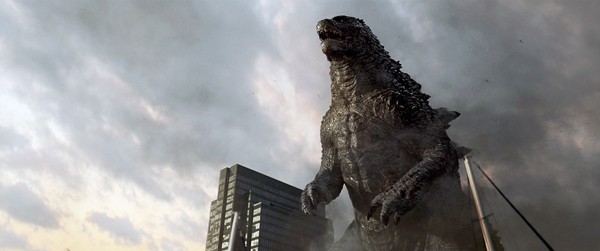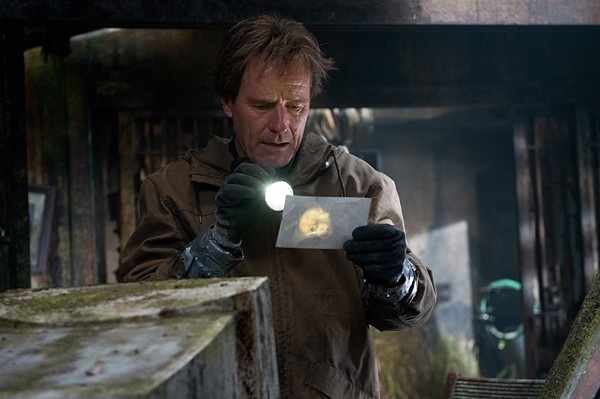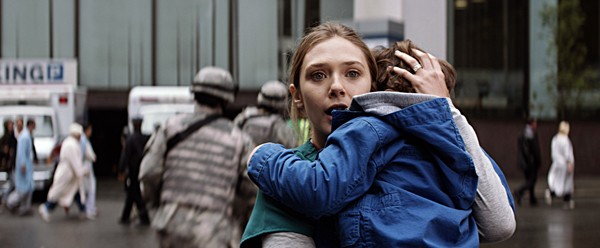Sometimes when you see a bad movie, you say, “How did this get made?” Maybe, you surmise, someone lost a bet. Or maybe, as seems to be the case with the recent Legends of Oz, the film was the by-product of an elaborate financial scam. There’s enough puzzling rubbish produced to fuel a popular podcast called “How Did This Get Made?”
Unfortunately, with Words And Pictures, it’s all too easy to suss out the pitch: Imagine Dead Poets Society, only Robin Williams has a love interest who is also a teacher.

Clive Owen and Juliette Binoche
Clive Owen plays Robin Williams … I mean, Jack Marcus, the eccentric English teacher who pushes his students to greatness at the requisite elite New England prep school. But Mr. Marc, as his students call him with forced whimsy, has a problem. You can tell from his beard that he used to be a hotshot writer, but now he’s hit the bottle, and the teaching gig is just a stop on the way down to rock bottom. His grown son has a girlfriend he’s too drunk to meet, the student literary magazine he founded isn’t as good as it used to be, and the school administrator whom he romanced with his roguish charm when he arrived at the school now has it out for him. Will he lose his job? Will he kick the joy juice and get his writing mojo back?
Enter Dina Delsanto (Juliette Binoche), the eccentric art teacher who pushes her students to greatness. She used to be a hotshot artist, but now she’s come down with rheumatoid arthritis and so has been forced to move to this sleepy, poorly photographed New England town to live with her sister. She still has the vision, but can she overcome her maladies to once again make paintings that will match your couch? And, clearly, as an attractive woman without a man, she needs love. Maybe she and Robin Williams should get together.
It will surprise you to learn that, at first, Marcus and Delsanto (as he, being the consummate ladies’ man, insists on calling her) apparently can’t stand each other. She’s annoyed by his charming little game where he drunkenly mugs in the teachers’ lounge and challenges the uptight educators to come up with multisyllabic words like “antihistamine.” He’s annoyed that she’s too good at it. Eventually, in an attempt to save his job and passive-aggressively woo Delsanto, Marcus proposes a contest: Which is better, a student assembly will be asked to decide, words or pictures?
Yep. That’s the movie.
But wait, I imagine you might say. This is a romantic comedy! Contrived setups are mandatory! Did you see Sleepless in Seattle? Tom Hanks and Meg Ryan had chemistry! So what if the words-versus-pictures “war,” which peppy students occasionally show up to remind us about, is pointless? What will carry the day is their raw animal attraction that throws sparks off the screen! We’re just here to see Owen and Binoche mix metaphors!
Well, first of all, Words and Pictures is billed as a romantic drama, not a romantic comedy. And, second of all, Owen and Binoche nail the “don’t like each other” part of the rom-dram arc but lack the “secretly like each other” component. Maybe it’s the fleeting look of disgust that crosses Binoche’s face as Owen’s paws close around her. Or maybe it’s the way Owen savors that vodka a little too realistically. But these two actors look absolutely miserable in each other’s presence. The “boy gets girl” phase is remarkably short: She saves his job, he compliments the lighting in her studio, then we dissolve into a post-coital verbal sparring match and some red wine by the bay. The “boy loses girl and spirals into self-destruction, goes to AA, and redeems himself by making a funny speech at the stupid words-versus-pictures thing that we’d forgotten about but for some reason have to do anyway” phase goes on way too long.
There are some bright spots: Owen is agreeably charismatic when he’s not trying to pretend he doesn’t hate Binoche, and Valerie Tian acquits herself well as Emily, a talented young artist who gets sexually harassed via social media, because that’s a thing the film’s writer (Gerald Di Pego) has heard happens to kids these days. But overall, Words and Pictures is too timid and half-hearted to even make an entertaining train wreck.
Words and Pictures
Opens Friday, June 13th
Ridgeway


